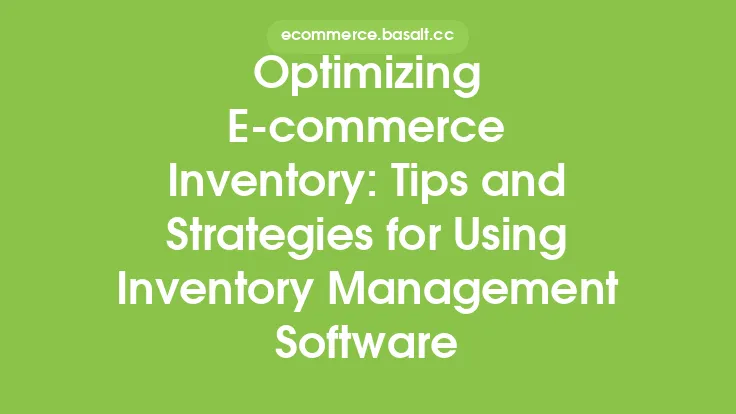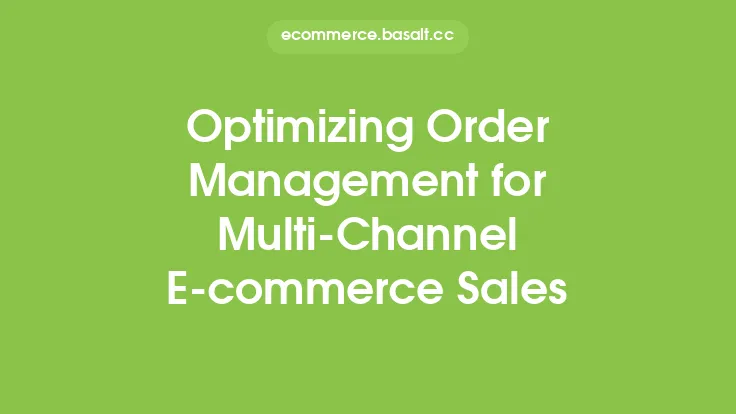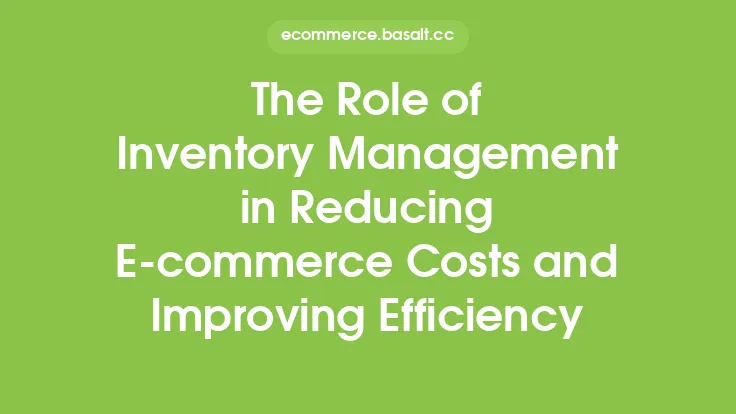When it comes to e-commerce, packaging plays a crucial role in the order fulfillment process. It not only protects the product during shipping but also represents the brand and can influence the customer's perception of the company. Optimizing packaging for efficient and cost-effective shipping is essential to reduce costs, improve customer satisfaction, and increase brand loyalty. In this article, we will explore the importance of packaging optimization, discuss the key factors to consider, and provide tips on how to achieve efficient and cost-effective shipping.
Introduction to Packaging Optimization
Packaging optimization is the process of designing and selecting the most suitable packaging materials and sizes to minimize shipping costs, reduce damage, and enhance the overall customer experience. It involves analyzing the product's dimensions, weight, and fragility to determine the optimal packaging solution. By optimizing packaging, e-commerce businesses can reduce their shipping costs, lower their environmental impact, and improve their brand image.
Key Factors to Consider in Packaging Optimization
There are several key factors to consider when optimizing packaging for efficient and cost-effective shipping. These include:
- Product dimensions and weight: The size and weight of the product will determine the optimal packaging size and material.
- Fragility and handling: Products that are fragile or require special handling may require additional packaging materials or custom packaging solutions.
- Shipping method: The shipping method, such as ground, air, or freight, will impact the packaging requirements.
- Brand image: The packaging should reflect the brand's image and values.
- Cost: The cost of packaging materials and shipping should be minimized while ensuring the product is protected and delivered safely.
Benefits of Optimized Packaging
Optimized packaging offers several benefits, including:
- Reduced shipping costs: By minimizing packaging size and weight, businesses can reduce their shipping costs.
- Improved customer satisfaction: Well-designed packaging can enhance the customer's unboxing experience and improve their perception of the brand.
- Increased efficiency: Optimized packaging can streamline the shipping process, reducing the time and labor required to package and ship products.
- Environmental benefits: Reduced packaging waste and minimized carbon footprint can contribute to a more sustainable business model.
Strategies for Optimizing Packaging
There are several strategies that businesses can use to optimize their packaging, including:
- Using custom packaging: Custom packaging can be designed to fit the product perfectly, reducing waste and minimizing shipping costs.
- Selecting the right packaging materials: Businesses should choose packaging materials that are durable, sustainable, and cost-effective.
- Implementing a packaging reduction program: Businesses can reduce packaging waste by implementing a reduction program that minimizes packaging size and material usage.
- Utilizing packaging automation: Packaging automation can help businesses streamline their packaging process, reducing labor costs and improving efficiency.
Best Practices for Packaging Optimization
To achieve optimized packaging, businesses should follow best practices, including:
- Conducting regular packaging audits: Regular audits can help businesses identify areas for improvement and optimize their packaging.
- Collaborating with suppliers: Businesses should work with their suppliers to ensure that packaging materials are sustainable, cost-effective, and meet their needs.
- Monitoring shipping costs: Businesses should regularly monitor their shipping costs to identify areas for reduction and optimization.
- Investing in packaging technology: Investing in packaging technology, such as automation and software, can help businesses streamline their packaging process and improve efficiency.
Common Packaging Mistakes to Avoid
There are several common packaging mistakes that businesses should avoid, including:
- Using excessive packaging: Excessive packaging can increase shipping costs and contribute to packaging waste.
- Choosing the wrong packaging materials: Choosing the wrong packaging materials can result in damaged products, increased shipping costs, and a negative customer experience.
- Not considering the shipping method: Failing to consider the shipping method can result in inadequate packaging, damaged products, and increased shipping costs.
- Not testing packaging: Failing to test packaging can result in inadequate packaging, damaged products, and a negative customer experience.
Conclusion
Optimizing packaging for efficient and cost-effective shipping is essential for e-commerce businesses. By considering key factors, such as product dimensions and weight, fragility and handling, shipping method, brand image, and cost, businesses can design and select the most suitable packaging materials and sizes. By implementing strategies, such as custom packaging, packaging reduction programs, and packaging automation, businesses can reduce their shipping costs, improve customer satisfaction, and increase brand loyalty. By following best practices and avoiding common packaging mistakes, businesses can achieve optimized packaging and improve their overall order fulfillment process.





